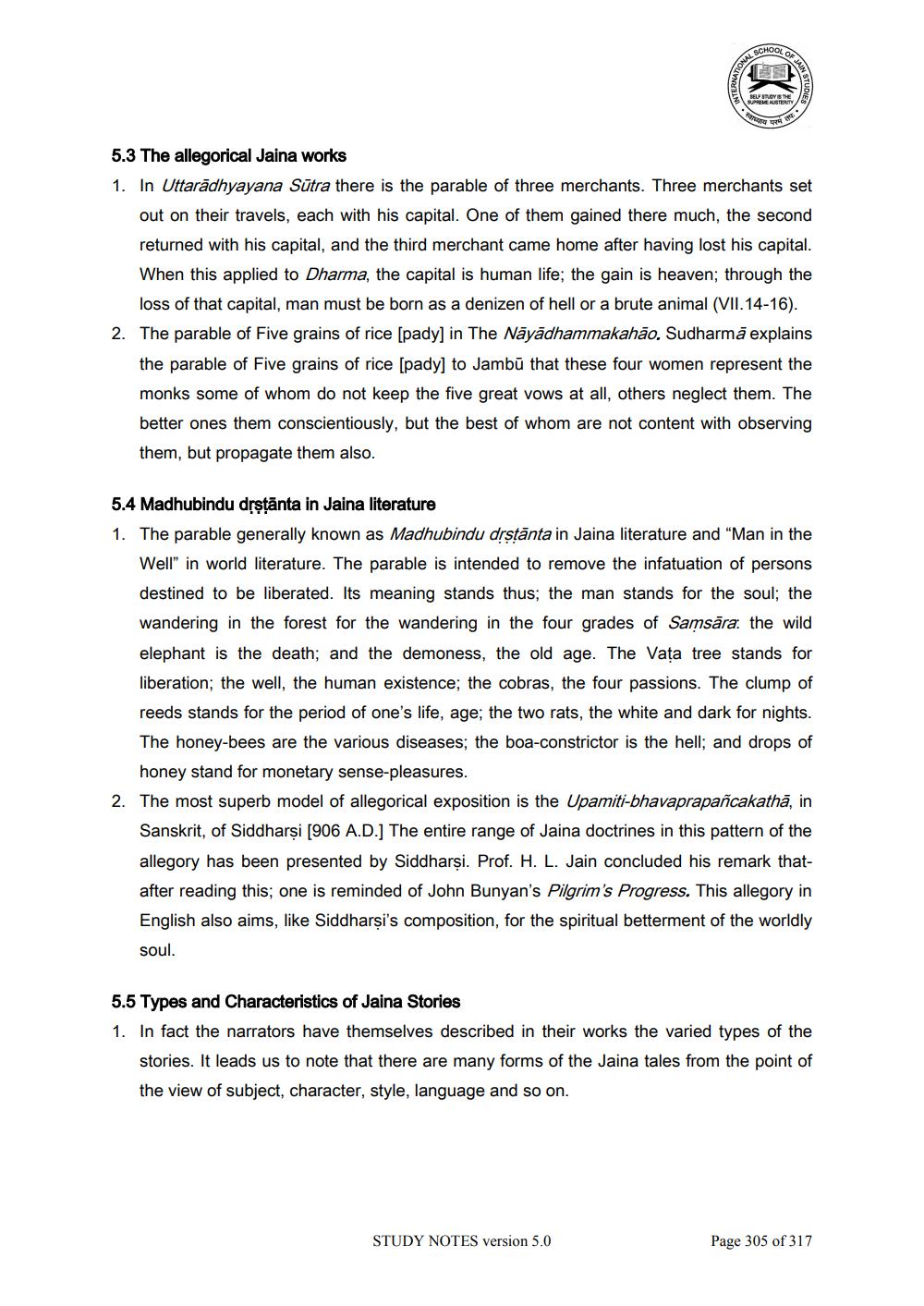________________
5.3 The allegorical Jaina works 1. In Uttarādhyayana Sūtra there is the parable of three merchants. Three merchants set
out on their travels, each with his capital. One of them gained there much, the second returned with his capital, and the third merchant came home after having lost his capital. When this applied to Dharma, the capital is human life; the gain is heaven; through the loss of that capital, man must be born as a denizen of hell or a brute animal (VII. 14-16). The parable of Five grains of rice (pady] in The Nāyādhammakahão. Sudharmā explains the parable of Five grains of rice (pady] to Jambū that these four women represent the monks some of whom do not keep the five great vows at all, others neglect them. The better ones them conscientiously, but the best of whom are not content with observing them, but propagate them also.
5.4 Madhubindu drstānta in Jaina literature 1. The parable generally known as Madhubindu drstānta in Jaina literature and “Man in the
Well” in world literature. The parable is intended to remove the infatuation of persons destined to be liberated. Its meaning stands thus, the man stands for the soul; the wandering in the forest for the wandering in the four grades of Samsāra: the wild elephant is the death; and the demoness, the old age. The Vața tree stands for liberation; the well, the human existence; the cobras, the four passions. The clump of reeds stands for the period of one's life, age; the two rats, the white and dark for nights. The honey-bees are the various diseases, the boa-constrictor is the hell; and drops of
honey stand for monetary sense-pleasures. 2. The most superb model of allegorical exposition is the Upamiti-bhavaprapancakathā, in
Sanskrit, of Siddharsi (906 A.D.] The entire range of Jaina doctrines in this pattern of the allegory has been presented by Siddharsi. Prof. H. L. Jain concluded his remark thatafter reading this; one is reminded of John Bunyan's Pilgrim's Progress. This allegory in English also aims, like Siddharşi's composition, for the spiritual betterment of the worldly soul.
5.5 Types and Characteristics of Jaina Stories 1. In fact the narrators have themselves described in their works the varied types of the
stories. It leads us to note that there are many forms of the Jaina tales from the point of the view of subject, character, style, language and so on.
STUDY NOTES version 5.0
Page 305 of 317




